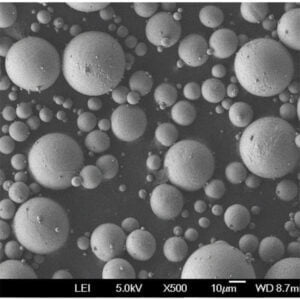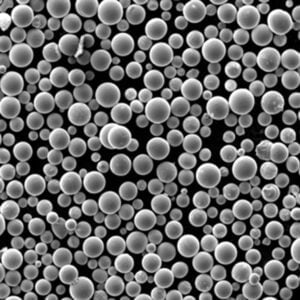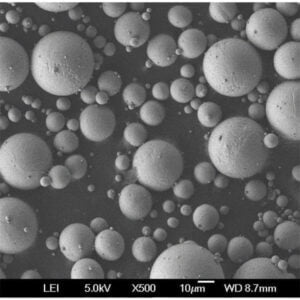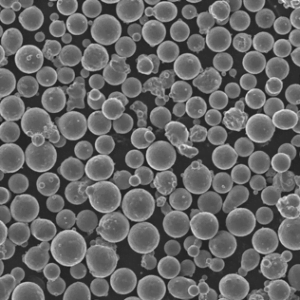3D Printing Silver Powder
Table of Contents
Imagine crafting intricate jewelry with the precision of a machine and the luster of pure silver. Or envisioning bespoke figurines and sculptures that glint under the light, each detail captured with stunning accuracy. This is the magic of 3D printing silver powder, a technology that’s revolutionizing the way we create objects of beauty and functionality.
The Application of 3D Printing Silver Powder
Silver, a precious metal revered for centuries for its elegance and conductivity, finds a whole new dimension in the realm of 3D printing. Here are some captivating applications that showcase the versatility of this technology:
- Jewelry Making: From delicate rings and earrings to statement necklaces and bold bracelets, 3D printing with silver powder allows designers to create intricate pieces with unparalleled precision. Complex geometries and personalized details become a breeze, pushing the boundaries of traditional jewelry making.
- Luxury Accessories: Ever dreamt of owning a handbag with a gleaming silver clasp or a pair of sunglasses with shimmering silver accents? 3D printing makes it possible to incorporate silver elements into high-end fashion accessories, adding a touch of opulence and exclusivity.
- Art and Design: 3D printing opens a treasure trove of possibilities for artists and designers. Imagine creating life-sized sculptures or intricate figurines with a captivating silver finish. This technology empowers them to translate their vision into stunning, tangible art pieces.
- Industrial Applications: The high conductivity of silver makes 3D printed silver powder ideal for creating specialized components in electronics and aerospace industries. Think of intricate antenna structures or lightweight, conductive parts that can withstand harsh environments.
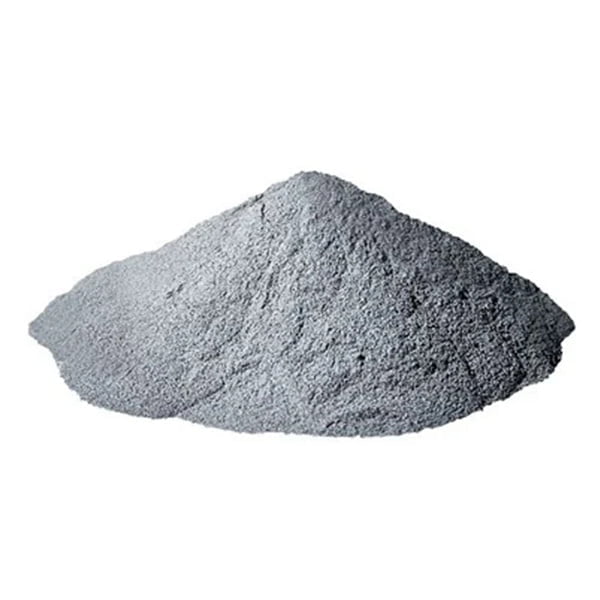
Production Process of 3D Printed Silver Powder
Unlike traditional 3D printing that uses filaments, silver 3D printing relies on a powder bed fusion technique. Here’s a breakdown of the process:
- Digital Design: The first step involves creating a 3D model of the desired object using software like CAD (Computer-Aided Design). This digital blueprint serves as the foundation for the printing process.
- Powder Preparation: The silver powder used in 3D printing is incredibly fine, with particle sizes ranging from 15 to 40 microns (thousandths of a millimeter). This ensures intricate details can be reproduced with exceptional accuracy.
- Printing Process: A specialized 3D printer spreads a thin layer of silver powder across a platform. A high-powered laser then selectively melts the powder particles together, following the precise instructions from the digital design. Layer by layer, the object takes shape.
- Post-Processing: Once printing is complete, the object is removed from the platform and undergoes a cleaning process to remove any residual powder. Depending on the desired finish, polishing or other post-processing techniques might be employed.
The Advantages of 3D Printing Silver Powder
There are several compelling advantages to using 3D printing with silver powder compared to traditional methods:
- Design Freedom: 3D printing eliminates the limitations of traditional casting or machining techniques. Complex geometries and intricate details become achievable, allowing for unparalleled design freedom.
- Customization: The ability to create objects directly from a digital file opens doors for mass customization. Personalized jewelry with inscriptions or bespoke figurines become readily obtainable.
- Reduced Waste: Unlike traditional methods that generate significant material waste, 3D printing with silver powder is a more sustainable approach. Unused powder can be recycled and reused, minimizing material loss.
- High Precision: The laser-based printing process ensures exceptional precision and accuracy in replicating even the most intricate details of the digital design. This translates into high-quality silver objects with a flawless finish.
Disadvantages of 3D Printing Silver Powder
While 3D printing with silver powder offers significant advantages, there are also some limitations to consider:
- Cost: The technology and materials involved in 3D printing silver can be expensive compared to traditional methods. This can translate to a higher cost for the final product.
- Limited Color Options: Pure silver powder typically results in a classic silver finish. While post-processing techniques like plating can introduce color variations, the options are limited compared to other materials.
- Surface Finish: While the printing process is highly precise, achieving a perfectly smooth, mirror-like finish on silver objects might require additional polishing or finishing techniques.
Choosing the Right 3D Printing Service for Silver
If you’re considering using 3D printing for your silver creations, here are some factors to consider when choosing a service:
- Expertise: Look for a service provider with experience in 3D printing with precious metals like silver. Their expertise can ensure optimal results and minimize potential issues.
- Machine Capabilities: Different 3D printers offer varying capabilities in terms of resolution, build volume, and laser power. Choose a service with a printer that can accommodate the size and complexity of your desired silver object. Additionally, inquire about the laser power; higher power lasers can achieve finer details but might require a higher minimum wall thickness for the object.
- Post-Processing Options: Not all service providers offer the same level of post-processing services. If a smooth, mirror-like finish is crucial for your project, ensure the chosen service offers polishing or other finishing techniques.
- Pricing and Turnaround Time: Compare pricing structures and turnaround times offered by different services. Some might charge a flat fee per gram of silver used, while others might have a tiered pricing system based on object complexity.
Exploring Alternative Precious Metal Powders
While silver offers a classic and sophisticated aesthetic, the world of 3D printing with precious metals extends beyond. Here’s a glimpse into some exciting alternatives:
- Gold: For a touch of opulent luxury, 3D printing with gold powder allows for the creation of stunning jewelry pieces, decorative accents, or even bespoke electronics components. Gold offers a wider range of color options through post-processing techniques like electroplating.
- Platinum: Renowned for its strength and resistance to corrosion, platinum powder finds applications in creating high-performance parts for the aerospace and medical industries. Its subtle sheen adds a touch of elegance to jewelry pieces as well.
- Palladium: A close relative of platinum, palladium powder offers similar advantages in terms of strength and corrosion resistance at a slightly lower cost. This makes it a compelling choice for industrial applications requiring a balance of performance and affordability.
Important Considerations for Working with Precious Metal Powders
When working with precious metal powders like silver, there are some important safety considerations to keep in mind:
- Inhalation Risks: Fine metal particles can be harmful if inhaled. It’s crucial to work in a well-ventilated environment and consider wearing a respirator when handling the powder.
- Skin Contact: While not typically a severe health hazard, prolonged contact with metal powders can irritate the skin. Wearing gloves is recommended when handling the powder or finished objects.
- Proper Storage: Precious metal powders should be stored in a cool, dry environment away from direct sunlight to prevent oxidation and maintain their quality.
The Future of 3D Printing with Precious Metals
The realm of 3D printing with precious metals is constantly evolving. Here are some exciting trends to keep an eye on:
- Multi-Material Printing: The future holds promise for 3D printers capable of using multiple materials within a single print. Imagine a silver ring with a dazzling gemstone setting, all created in one go!
- Nano-Printing: Advancements in nanotechnology could pave the way for printing with even finer metal particles, enabling the creation of objects with unparalleled detail and surface smoothness.
- Sustainability Efforts: Research is underway to develop more sustainable methods for producing metal powders and minimizing waste during the 3D printing process.

FAQ
| Question | Answer |
|---|---|
| What type of 3D printer is used for silver powder? | Powder bed fusion 3D printers are used for printing with silver powder. A high-powered laser selectively melts the powder particles together, building the object layer by layer. |
| Is 3D printed silver real silver? | Yes, 3D printed silver uses real silver powder. The silver content can vary depending on the specific material used, but it’s typically a high percentage, often exceeding 90%. |
| Can you 3D print silver jewelry at home? | While home 3D printers are becoming increasingly accessible, 3D printing with precious metals like silver is not yet a common option for home use. The technology and materials involved are specialized and require expertise to operate safely and achieve high-quality results. |
| How strong is 3D printed silver? | The strength of 3D printed silver depends on several factors, including the silver content, printing parameters, and post-processing techniques. Generally, it’s not as strong as cast silver, but it can be suitable for various applications like jewelry or decorative objects. |
| Is 3D printed silver a good investment? | Whether 3D printed silver is a good investment depends on your specific needs and budget. It offers advantages like design freedom and customization, but the cost can be higher compared to traditional methods. Consider the value you place on these advantages and compare prices before making a decision. |
Share On
MET3DP Technology Co., LTD is a leading provider of additive manufacturing solutions headquartered in Qingdao, China. Our company specializes in 3D printing equipment and high-performance metal powders for industrial applications.
Inquiry to get best price and customized Solution for your business!
Related Articles
About Met3DP
Recent Update
Our Product
CONTACT US
Any questions? Send us message now! We’ll serve your request with a whole team after receiving your message.

Metal Powders for 3D Printing and Additive Manufacturing
COMPANY
PRODUCT
cONTACT INFO
- Qingdao City, Shandong, China
- [email protected]
- [email protected]
- +86 19116340731






